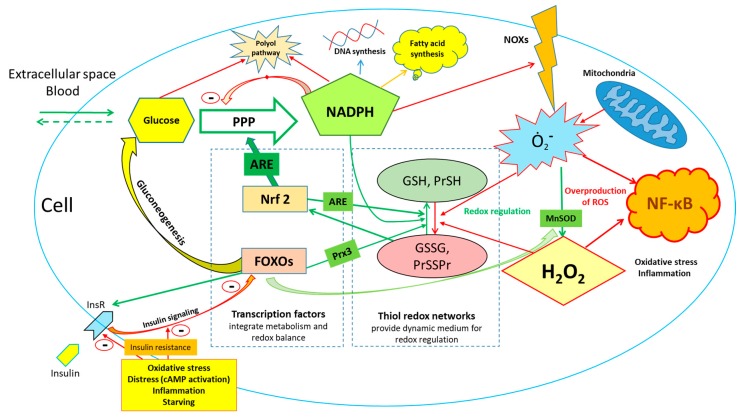Figure 2.
Glucose availability is a major factor in the maintenance of redox homeostasis through the reduction in oxidized NADP+, which is used for the subsequent reduction in oxidized glutathione and thiols. At the same time NADPH is used for synthesis of DNA and fatty acid synthesis and is needed for activities of NADPH oxidases, NO-synthase and other processes. The scheme is simplified and regulatory networks functioning in living systems are much more complex and include other mechanisms and feedback loops. For example, it was recently shown that the deletion of Nrf2 in mice can be—to a large extent—compensated by other adaptive mechanisms in conditions of caloric restriction [23]. This suggests that robust regulatory network beyond Nrf2 and FOXO transcription factors exists in order to maintain redox balance. Abbreviations: PPP—pentose phosphate pathway, NOX—NADPH oxidase, NOS—nitric oxide synthase, GSH—glutathione, GSSG—glutathione disulfide, Pr—protein, PrSSPr—disulfide bonds between/within the proteins and other molecules, ARE—antioxidant response element, InsR—insulin receptor, cAMP—cyclic adenosine monophosphate, FOXO—forheadkbox O transcription factors, Prx3—peroxiredoxin 3, Nrf2—Nuclear factor (erythroid-derived 2)-like 2 transcription factor, MnSOD—manganese superoxide dismutase, NF-kB—nuclear factor kappa-light-chain-enhancer of activated B cells.

